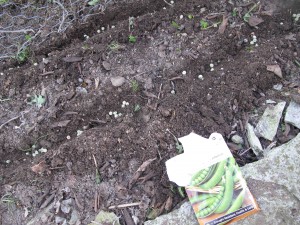Dear Mark, Jay, and other new gardeners,
Don’t allow yourself to be fooled.
The unseasonably early spring may have you thinking that it’s time to “put in your whole garden.” The nurseries, garden centers, and outdoor departments of the big box stores are certainly brimming with seeds and seedlings of all kinds. Those indicators, however, are not the recognized standards for planting timing. For more reliable advice, we need to look to science and math.
Let’s stick to the facts. According to some sources, the last frost date in our area is May 27. With weather — always — there is no guarantee.
Another way of looking at the concept of the last frost day is to consider the statistical odds of frost in relationship to the calendar. This website is one that lays out the numbers in a way that helps gardeners evaluate the risk of different planting dates. In our area, planting before April 17 entertains a 90% of frost; waiting until April 28 drops those odds to 50%. After May 9, there’s only a 10% chance of frost, which points to the fact that gardeners should be on the lookout for frost warnings even then– and probably until May 27.
Whether they wish to admit it or not, many gardeners have a gambling problem. They know that planting early is risky, and sometimes that’s a risk they are willing to take. For some, the thrill of having the first ripe tomato outweighs the dangers of frost. There are ways of protecting early plants with covers, or cloches, garden fabric, or bringing plants back indoors, but those actions require constant vigilance until the danger of frost has passed and even then, there’s risk involved.
This does not mean that you have to wait until late May to start your garden, but it does mean that “tender annuals” should probably should not be planted until then. For the best results, hold off planting warm weather crops until after Memorial Day.
So what can you plant right now with little risk? The good news is that there are various cole crops, also aptly called “cold crops”, that you can sow right now. These are plants that actually prefer cool weather to the full heat of summer, and they will also tolerate frost. They may bolt or finish their life cycle by the time the tender crops like tomatoes or peppers are producing, but we have had good results with extending the growing season of some cold-weather crops by trimming back plants when they’ve started to go to flower, for example.
Right now you can plant cabbage, cauliflower, broccoli, radish, lettuce, peas, beets, potatoes, and spinach. Depending on how lucky you feel, you could try seeds or seedlings — or maybe some of both. You will want to tend to your plants, weeding and watering if necessary. You’ll also want to listen for frost alerts because your plants are vulnerable until their roots are well established. These plants can survive frost and frost damage even, but you’ll still want to give them the very best start.
Having a successful growing season is one of the main goals in planting a garden. Knowing what your plants need and being aware of the implications of weather for your garden are two ways of improving your odds for success. Watch for more tips are making your garden a winner.
Good luck!
Janice



